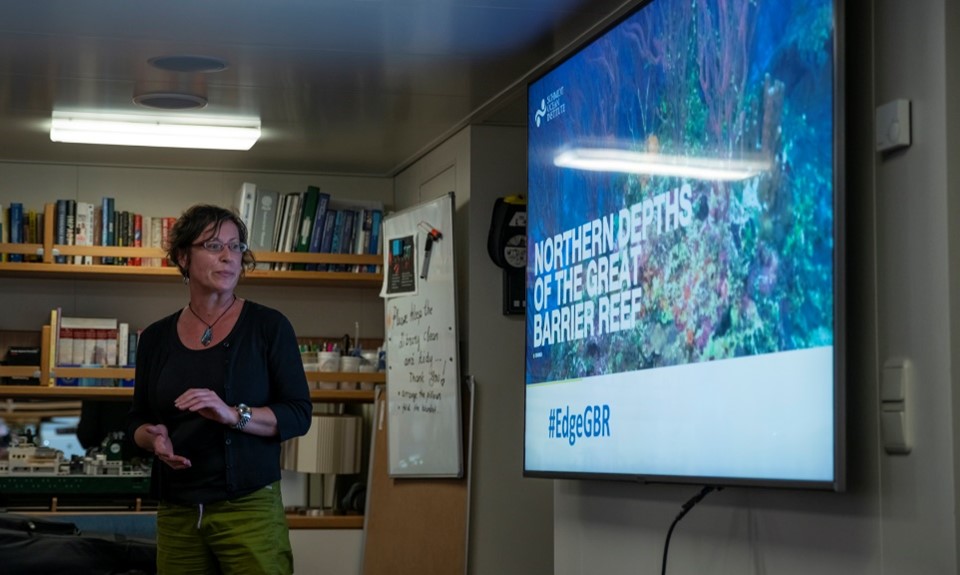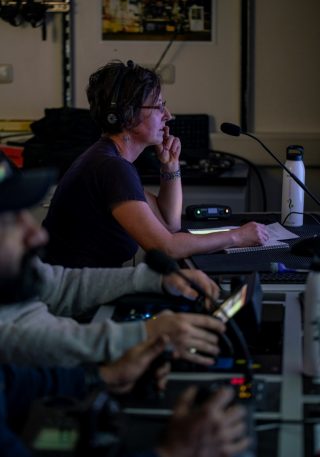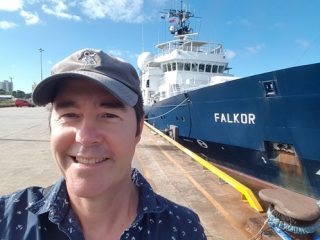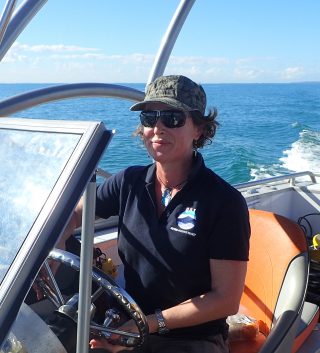The Great Barrier Reef is perhaps the world’s most iconic and well-studied coral reef system. Yet, there is still so much we do not know about it, especially when it comes to the deeper reefs and how far they extend into the depths. This latest R/V Falkor expedition will focus on mapping and surveying the far northern reaches and outer edge of the Great Barrier Reef off the very remote Cape York Peninsula.

This will be primarily a voyage of exploration and discovery since very few scientific research surveys have ever been conducted on the remote outside edge of the Great Barrier Reef in this region. This is the first time a science ROV (remotely operated vehicle) has explored these offshore deep seascape features, giving scientists and marine park managers the first glimpses of these remote undersea habitats.

Features of interest include steep submarine canyons that connect the continental shelf with the deep seafloor in the Coral Sea Basin, vast undersea landslides, “detached” reefs, and mesophotic reefs in the twilight zone beneath the well-lit surface shallow coral reefs that the Great Barrier Reef is famous for.
This sort of mapping and ROV survey research could not be done without the advanced technology aboard the research vessel Falkor. ROV SuBastian is a state of the art ROV which can dive to depths of 4,500 meters. SuBastian is fitted with multiple HD/4K cameras, amongst other data and biology collection tools. Australia does not have a dedicated science ROV, so SuBastian is critical for capturing imagery and data of Australia’s deep marine estate. Alongside ROV SuBastian, Falkor possesses one of the most advanced sonar mapping systems aboard a research vessel.
This expedition is true frontier science, as we will be gathering knowledge on unknown and unexplored depths and edges of the most remote region of the Great Barrier Reef. We have a small science team onboard R/V Falkor, with many collaborators participating remotely from onshore. The team includes marine geologists, ecologists, biologists, oceanographers, and taxonomists from here in Australia, and from as far away as Granada, Spain.

As well as our scientific objectives, we are very excited to be joined on Leg 3 of the voyage by Schmidt Ocean Institute’s Artist-at-Sea Taloi Havini. The work that Taloi will prepare from this cruise will be part of her first international solo exhibition.
Expedition Chief Scientist Dr. Robin Beaman and Co-chief Scientist Mardi McNeil sailed together on the previous R/V Falkor expedition, Seamounts, Canyons, and Reefs of the Coral Sea. This new Northern Depths of the Great Barrier Reef expedition is Dr. Beaman’s third R/V Falkor voyage this year.

